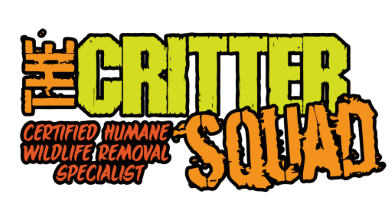If someone finds baby animals in their attic, they should proceed with caution. First, they need to assess the situation and safely identify the species. Observing from a distance is vital, as handling can cause stress or injury. It is important to contact a wildlife rehabilitation expert for humane assistance. Additionally, securing the home can prevent future incursions. Understanding local wildlife laws and the specific needs of the animals will guarantee their well-being. More helpful guidance awaits.
Key Article Highlights
- Assess the situation carefully, ensuring the safety of both the animals and individuals present.
- Identify the species of the baby animals to understand their specific needs and behaviors.
- Observe the animals from a safe distance without handling to avoid causing them stress.
- Contact wildlife rehabilitation experts for guidance on humane removal and care options.
- Ensure proper nutrition and a calm environment if you need to provide temporary care.
Assess the Situation
Upon discovering baby animals in an attic, it is essential to approach the situation with care and understanding. Evaluating the environment is important for ensuring the safety of both the animals and the individuals involved. Observing the animal behavior can provide valuable insights; for instance, if the young appear calm and unbothered, the mother may be nearby, ensuring their well-being. Implementing safety precautions is critical; avoid sudden movements or loud noises that could startle the animals. If they seem distressed, it is best to maintain distance and monitor their actions. Understanding their needs and natural instincts helps in making informed decisions, ultimately fostering a compassionate approach to this unexpected encounter. Additionally, consider contacting humane bat removal experts who can safely handle the situation if the animals are bats. Bats are often found in attics due to their preference for dark and secluded spaces, which provide them safety and warmth.
Identify the Species
Before taking any action, it is essential to identify the species of the baby animals found in the attic, as this knowledge informs the best course of action. Different species exhibit unique characteristics and behaviors that can greatly influence how one should respond. For instance, baby raccoons have masked faces and are known for their curious nature, while squirrels may be recognized by their bushy tails and rapid movements. Understanding these species characteristics not only aids in determining their needs but also guarantees the safety of both the animals and the humans involved. By recognizing their animal behavior, such as nesting habits or vocalizations, one can approach the situation with empathy and informed caution, ultimately leading to the most compassionate resolution. Additionally, seeking assistance from raccoon trapping experts can ensure a humane approach to removal when dealing with baby raccoons. It is also important to be aware of the potential health risks associated with raccoons, as they can carry diseases that may pose a threat to humans. Furthermore, it is crucial to note that rats are notorious for their nesting habits, often building nests in secluded areas, which may also require attention if found in the attic. In cases of rat infestations, it is advisable to contact a professional for effective rodent removal and control.
Observe From a Distance
How can one guarantee the safety of both themselves and the baby animals in the attic? The first step is to observe from a distance, allowing for a safe assessment of the situation. Utilizing effective observation techniques, one can gain insights into the animals’ behavior without disturbing them. It is essential to remain quiet and patient, as sudden movements or loud noises may stress the young creatures or provoke their protective parent. By watching their interactions and understanding their needs, one can determine the best course of action. This mindful approach not only protects the animals but also fosters a respectful coexistence with wildlife. Awareness of animal behavior can reveal when it is appropriate to seek further assistance from wildlife professionals.
Avoid Handling the Animals
Handling baby animals can pose significant risks to both the creatures and the individuals involved. It is vital to prioritize safety precautions to guarantee the well-being of everyone. Engaging in animal handling can lead to stress for the animals and potential injuries for the humans involved.
Here are three important reasons to avoid handling baby animals:
- Wild Instincts: Baby animals may instinctively feel threatened, leading to defensive behaviors that could result in bites or scratches.
- Disease Transmission: Many wild animals can carry diseases, putting humans at risk when they come into direct contact.
- Parental Disturbance: Handling can disrupt the mother’s ability to care for her young, jeopardizing their survival.
Respecting their space is vital for both the animals and the individuals who wish to help.
Contact a Wildlife Rehabilitation Expert
When baby animals are discovered in an attic, the best course of action is to contact a wildlife rehabilitation expert. These professionals possess the knowledge and skills necessary to handle the delicate situation while ensuring the safety of both the animals and the household. Rehabilitation techniques are applied to nurture the young creatures back to health, promoting effective wildlife conservation efforts.
| Reasons to Contact a Wildlife Rehabilitation Expert | Benefits of Their Expertise |
|---|---|
| Knowledge of local wildlife species | Proper care tailored to species |
| Experience in humane animal handling | Minimizing stress for the animals |
| Access to rehabilitation resources | Increased chances of survival |
| Understanding of legal regulations | Ensuring compliance with wildlife laws |
| Guidance on safe removal and relocation | Protecting the wellbeing of the ecosystem |
Secure Your Home to Prevent Future Visits
To prevent future visits from baby animals, homeowners must take proactive steps in securing their attics and other vulnerable areas of their homes. This not only protects the animals but also guarantees a safe living environment for families.
Here are three essential actions to reflect on:
- Seal Openings: Inspect the exterior of the home for gaps or cracks and seal them to eliminate potential entry points.
- Install Screens: Use sturdy screens on vents and chimneys to provide a barrier against curious wildlife.
- Maintain Landscaping: Trim overhanging branches and remove debris near the home, discouraging animals from nesting close to the property.
Understand Local Wildlife Laws
Understanding local wildlife laws is essential for homeowners who encounter baby animals in their attics, as these regulations can dictate the appropriate steps to take for their care and relocation. Local wildlife regulations vary by region, often including specific guidelines on how to handle wildlife encounters. Many areas have animal protection laws designed to safeguard the welfare of young animals, which may prohibit their removal without proper permits or the assistance of licensed professionals. Homeowners should reach out to local wildlife authorities or animal control for guidance, ensuring compliance with these laws while prioritizing the safety and wellbeing of the animals. By adhering to these regulations, individuals can contribute positively to their local ecosystem and promote responsible stewardship of wildlife.
Educate Yourself on the Species’ Needs
Educating oneself about the specific needs of the baby animals found in an attic is essential for guaranteeing their proper care and eventual relocation. Understanding their habitat requirements and dietary needs will not only promote their health but also facilitate a smoother change back to the wild.
Consider the following points:
- Habitat Requirements: Research the natural environments that these animals thrive in, guaranteeing that they have the appropriate conditions for survival once relocated.
- Dietary Needs: Identify the specific food that the species consumes to guarantee they receive proper nutrition during their time in care.
- Social Behavior: Learn about their social interactions, as some species may need companionship or specific handling techniques to reduce stress.
This knowledge fosters a compassionate approach to wildlife care.
Frequently Asked Questions
Can I Relocate Baby Animals Myself?
Relocating baby animals can be a delicate dance, requiring careful consideration of their welfare and legal considerations. Employing proper relocation methods is essential, as improper handling may jeopardize their survival and well-being. Empathy should guide actions.
What Should I Do if the Mother Is Missing?
If a mother is missing, seeking guidance from a wildlife rescue or animal rehabilitation expert is essential. They can provide proper care advice and determine if the babies need intervention or can be left alone.
How Long Will Baby Animals Stay in My Attic?
Like uninvited guests at a party, baby animals may linger in an attic for several weeks. Identifying common attic animals helps determine their habits, ensuring a gentle approach for their eventual safe relocation back to the wild.
Are Baby Animals Dangerous to My Pets?
Baby animals can exhibit unpredictable behavior, potentially posing risks to pets. It’s essential to implement pet safety precautions, ensuring a harmonious environment. Awareness and understanding of wildlife interactions foster a safer space for all involved.
What Signs Indicate an Animal Is Sick or Injured?
Signs of illness in animals include unusual sick behavior, such as lethargy or loss of appetite. Injury symptoms may manifest as limping, excessive grooming, or visible wounds. Observing these signs is essential for timely intervention and care.

